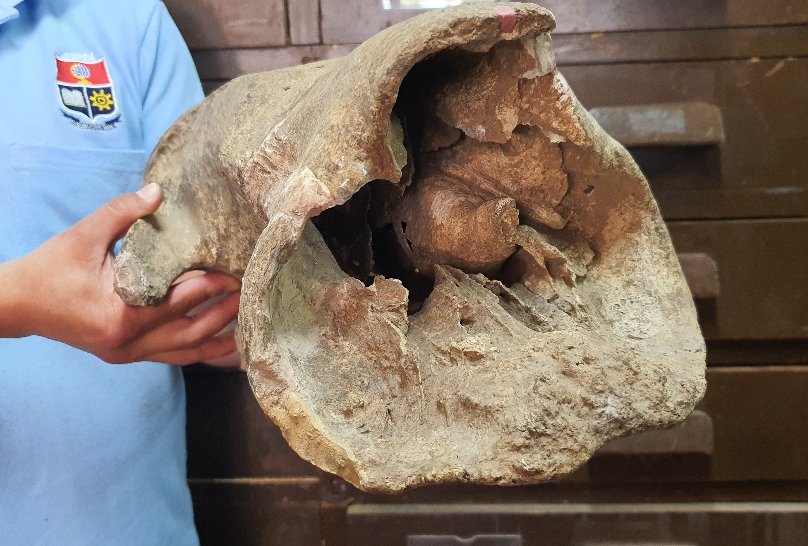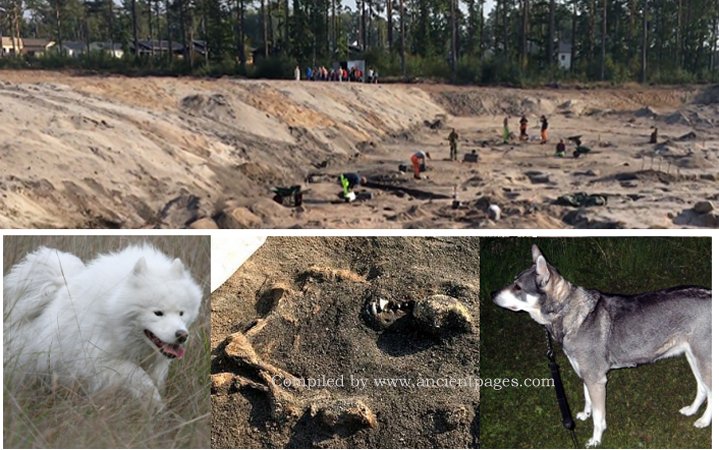‘South-American Yeti’: Giant Creature Lived 10,000 Years Ago And Exclusively On Ecuador’s High Ground
Eddie Gonzales Jr. – MessageToEagle.com – A giant sloth creature lived more than 10,000 years ago in the mountains and inter-Andean valleys of Ecuador more than 2,500 meters above sea level.
 llustration of Oreomylodon wegneri. Image credit: Pablo Lara/CTyS
llustration of Oreomylodon wegneri. Image credit: Pablo Lara/CTyS
This “South American Yeti” (Oreomylodon wegneri) weighed about a ton, had large claws, and its muzzle was adapted to withstand altitude and low temperatures, according to palaeontologists from Argentina and Ecuador.
The skulls that allowed the identification of this extinct beast were found scattered in various mountainous areas between central and northern Ecuador.
Researchers have enough material to rebuild the almost complete body of this giant animal that lived between 40,000 and 10,000 years before the present.
“This new species has previously unknown characteristics, especially in its wide snout, adapted so that this animal can withstand the low temperatures and the mountain climate,” Dr. Luciano Brambilla, a researcher at the Centre for Interdisciplinary Studies at the University of Rosario (CEI-UNR) and CONICET told CTyS-UNLaM Agency.
It had large claws on its back and front legs, however, more research is needed to obtain additional and much more specific details regarding the creature.
Regarding the environment in which this animal lived, the Ecuadorian palaeontologist José Luis Román Carrión of the Polytechnic School of Quito said that more than 10,000 years ago, in the mountainous sites and in the valleys where the fossils were found, predominated grasslands, but the climate was about six or seven degrees colder than at present and the ecosystem had glacial lagoons”.
Over more than 100 years, fossil remains of this giant beast were found between 2,500 and 3,100 in altitude from north to central Ecuador, although it has now been re-affirmed as a unique species of terrestrial sloth that lived exclusively on high ground.
In 2008, at a site located in the city of Quito, were found three examples of adults and one juvenile of this South American “Yeti”, which are part of the study recently published in the scientific Journal of Vertebrate Paleontology.
See also:
New Species Of Carnivorous Dinosaur That Inhabited Patagonia 90 Million Years Ago – Discovered
“The finding of three examples in the same place makes us think that these animals lived in herds, a completely new fact for all terrestrial sloths,” said Román Carrión, lead author of the research.
In this way, the “Yeti” found in the heights of Ecuador, does not correspond to the imaginary of a lone abominable snowman. Indifference from the idea of a reckless and dangerous beast, these giant sloths were herbivorous animals and, if they ever crossed paths with humans more than 10,000 years ago, it could have served as food for those distant ancestors.
This species of giant sloth adapted to the cold and to the heights was named as Oreomylodon wegneri, which means mountain mylodon. The remains are preserved in the Natural History Museum of Quito.
“To withstand the low temperatures, these animals have developed a wider snout than the other species of giant sloths known so far, which allowed them to moisten the dry air they inhaled and protect the humidity by exhaling the air,” Dr. Román Carrión explained.
Possibly, the Oreomylodon wegneri had a hyper-developed sense of smell, which could affect the interaction between males and females as well as the delimitation of their territories.
This South American “Yeti”, with large claws -which he used to get his food- in an upright position could exceed two meters high and on four legs was similar in size to a small car.
About 10,000 years ago, at the end of the so-called Ice Age, the ecosystem began to change completely and these giant and other mega-mammals such as mastodons, horses, and saber teeth tigers became extinct.
Original story – here.
Written by Eddie Gonzales Jr. – MessageToEagle.com Staff














